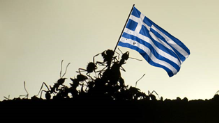| Publication Type: | Journal Article |
| Year of Publication: | 2022 |
| Authors: | E. Schifani, Alicata, A., Menchetti, M., Borowiec, L., Fisher, B. L., Karaman, C., Kiran, K., Oueslati, W., Salata, S., Blatrix, R. |
| Journal: | Arthropod Systematics & Phylogeny |
| Volume: | 80 |
| Start Page: | 627 |
| Pagination: | 627-648 |
| Date Published: | 11/2022 |
| Keywords: | apomorphy, biogeography, diversification, Mediterranean fauna, morphological convergence, Myrmicinae, plesiomorphy |
| Abstract: | The West-Palearctic region is a diversity hotspot for the ant genus Aphaenogaster. Species in this region are characterized by high morphological variation, which has led to their subdivisioninto different infrageneric groups. The very first classification in three subgenera, dated 1915, was gradually replaced by eight species-groups. To probe the evolutionary consistency of these species-groups, we sequenced 46 species from all eight species-groups and biogeographic sectors of the region, using one mitochondrial (COI) and six nuclear markers (EPICs), and interpreted the results by integrating qualitative morphology. Our results demonstrate the non-monophyly of all formerly recognized subgenera and species-groups, except for the crocea group. We use the phylogeny and morphological characters to propose a new classification of six monophyletic species-groups (crocea, gibbosa, graeca, pallida, sardoa, subterranea). The pallida, subterranea and sardoa (formerly testaceopilosa) groups attain monophyletic status by reassigning a few taxa. The gibbosa group is to be considered exclusively Western-Mediterranean until further assessments of similar Eastern species. The new graeca group is established by including former members of the splendida and subterranea groups, while the polyphyletic cecconii, obsidiana, and splendida groups are dismissed. Notably, the first is not part of the tropical Deromyrma clade as previously thought, while at least two independent clades which require further investigation are composed of species from both the cecconii and splendida groups, suggesting repeated morphological convergences based on similar ecological adaptations. Finally, A. cardenai is confirmed to be a significantly divergent lineage. In addition, three Aphaenogaster species are moved to different genera: Messor asmaae (Sharaf, 2018) comb. nov., Messor isekram (Bernard, 1977) comb. nov., and Pheidole sarae (Sharaf, 2018) comb. nov. Further studies should address the evolutionary relationships between the clades recovered in this study. |
| DOI: | 10.3897/asp.80.e84428 |
Revisiting the morphological species groups of West-Palearctic Aphaenogaster ants (Hymenoptera: Formicidae) under a phylogenetic perspective: toward an evolutionary classification
Taxonomic name:
